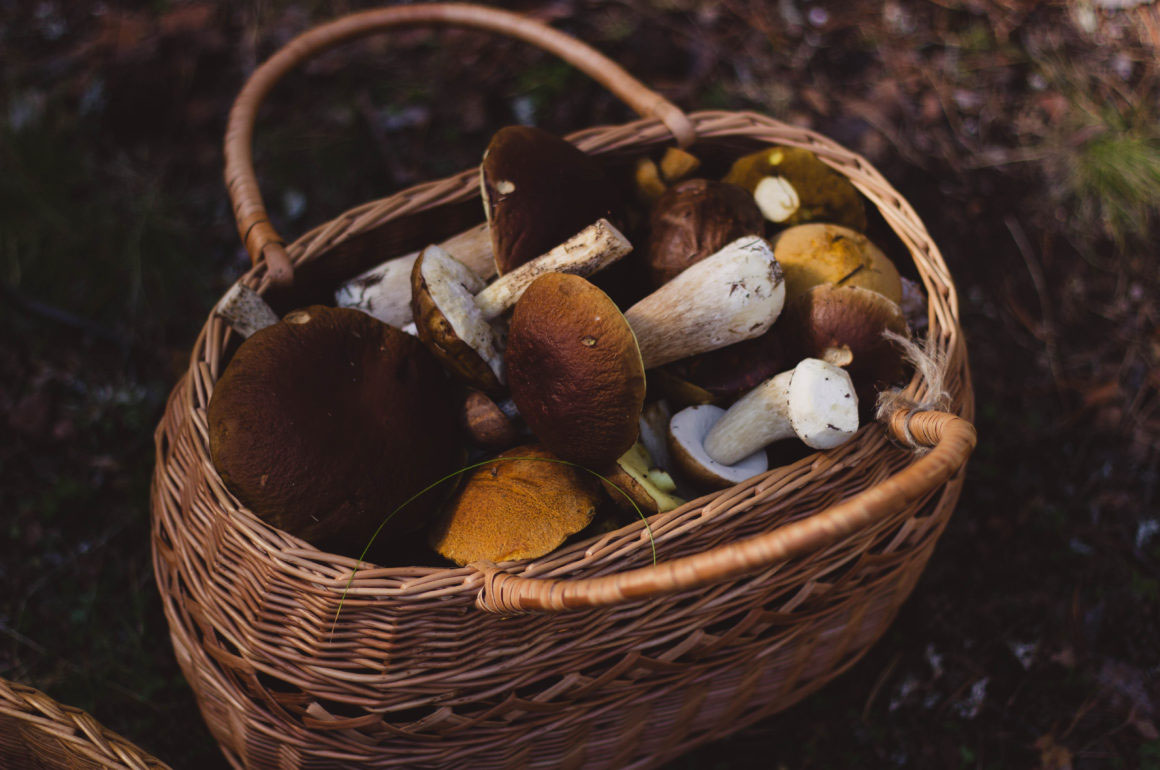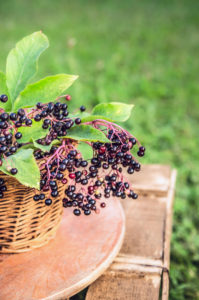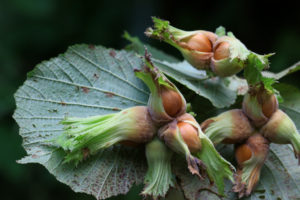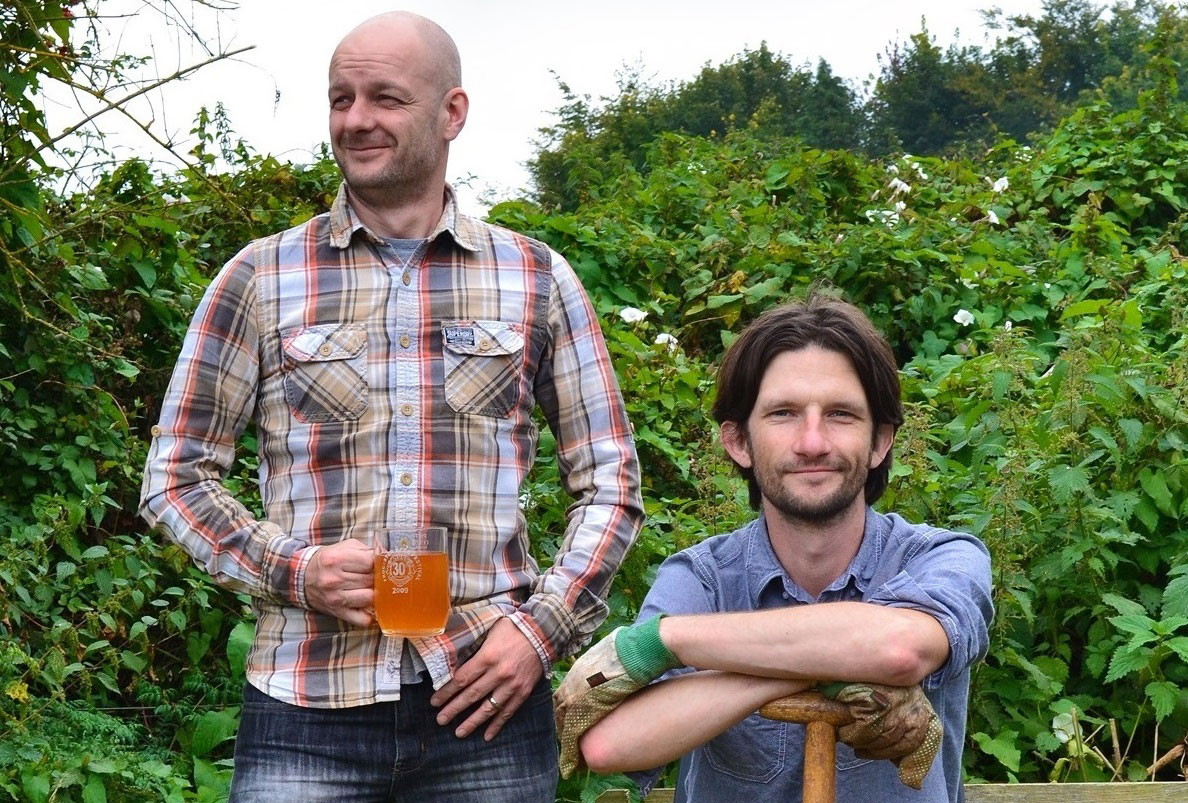
As we reach the fuzzy boundary between late summer and early autumn, woodlands and hedgerows start to give up many of the forager’s most treasured bounties. From ripe, juicy berries to spectacular fungi, there’s enough choice for all manner of fancy chefs’ food menus. Below we list some of our favourite forest finds but, before you rush out with your wicker trug, Tupperware tub or supermarket carrier, remember there’s a lot of wildlife around that relies on these foodstuffs more than you. So please, don’t be greedy and leave plenty for the wild critters to graze upon.
Our favourite forest foragables
Berries
 We can all recognise a bush full of plump blackberries and enjoy their jammy, crumbly qualities, but there are numerous other berries worth getting your eye in for. If you’re lucky you may still have time to gather elderberries – the tart, tannin rich fruits make one of the best country wines going (which is why they’re also known as ‘the English grape’) and can also be used in cordials, jellies and syrups. If you’re a fan of homemade syrups then the best is provided by the vibrant red rosehips, which come packed with vitamin C.
We can all recognise a bush full of plump blackberries and enjoy their jammy, crumbly qualities, but there are numerous other berries worth getting your eye in for. If you’re lucky you may still have time to gather elderberries – the tart, tannin rich fruits make one of the best country wines going (which is why they’re also known as ‘the English grape’) and can also be used in cordials, jellies and syrups. If you’re a fan of homemade syrups then the best is provided by the vibrant red rosehips, which come packed with vitamin C.
Sloes, damsons and their bullace clones can be turned into jams and crumbles that rival anything a blackberry can do, but their best use is to soak them in a spirit with sugar for a sweet and fruity liqueur – make it now and it’ll be at its delectable best for Christmas (either for yourself or a gift).
Another liqueur option is the largely unheralded haw berry. It’s a dry, starchy fruit with a large seed inside, so has limited uses, but its unique fruity crab apple flavours make it an interesting ingredient for boozes, jellies and flavoured vinegar.
Apples
While it’s not impossible to stumble across a shiny and juicy dessert apple on a stroll through the woods, you’re much more likely to spot its rougher country cousin the crab apple. Flavours can have a huge variation from tree to tree, but you won’t want to munch any of them raw – the sharp tannins will turn your cheeks inside out. However, these tannins are just the ticket for a cider or wine, particularly if blended with juicier, sweeter apple varieties.
Crab apples also make a famous jelly for spreading on scones or toast and a thicker ‘cheese’ which is sliced up and served with sweet or savoury dishes, pairing particularly well with roast pork.
 Nuts
Nuts
This time of year sets squirrels into a frenzy as their favourite nuts ripen ready for their winter burial. Perhaps the most common in our woods belongs to the beech tree, which, although edible, is rather bitter, full of tannin and fiddly to prepare, which is why they’re not high on the list of the human’s most desirable nuts. They can apparently be made into a pesto, but you’re better off looking out for pine nuts if you’re a fan of basil-and-nut sauce.
The king of British wild nuts is the cobnut and its close relative the hazelnut. Crack open when ripe for a raw crunching treat, or you can even pick them when they’re at their unripe milky stage, slice them up and add to a curry as an alternative to peanuts or cashews.
Sweet chestnuts are another fairly common site, and a much enjoyed favourite for Christmas roasting and, if you’re lucky, you might even find a walnut tree in a nearby field or park. If you’ve ever wondered if anything can be done with the most British of nuts, the acorn, then the answer is ‘yes’. Roast, grind and use as a substitute for coffee.
Fungi
There are around 15,000 types of fungi growing in the UK, so your biggest challenge when foraging is not spotting them, but correctly identifying them, and it’s important to be 100% certain of what you’re picking because many of our native fungi are deadly.
Of the edible varieties, perhaps the easiest to recognise is the giant puffball. When small it looks like any number of other fungi, but no other variety will grow into such a large round blob. If you find one, you’re in for a treat for it fries up nicely and, due to its size, will give you plenty to dine upon.
The shaggy ink cap mushroom is another fairly easy variety to spot in fields, roadside verges or the fringes of woods. It’s a tall, slender, pointed mushroom and, when past its peak, weeps black ink-like tears. It cooks up well and has a mild mushroom flavour. Other edible funguses with interesting names include Wood Ear, Orange Birch Bolete and Cauliflower Fungus, although their flavours can be of varying quality. A guaranteed tasty treat is the well-known chanterelle, which, we’ve been told, can also be used to flavour a liqueur, but do make certain you know what you’re looking for – grab yourself a guide and see what else you can find. Even if you’re too nervous to risk eating a thing, spotting these amazing fungi gives you a whole a new way to enjoy our wonderful, wild countryside.
Note: You can find foraging guides, and even foraging courses, online for those of you who want to find out more about the wild treats available in our nation’s hedgerows and woodlands. Try www.wildfooduk.com or www.wildfoodschool.co.uk. You could also try the 2014 book, Wild Food by Roger Phillips, which is full of photos, information and recipes for voracious foragers!



 The Two Thirsty Gardeners, Rich and Nick, are bloggers who love gardening, eating and drinking in equal measure! They love to share tales from their allotment including their experiments turning the spoils of their crops into alcohol, both the good and the bad!
To find out more about Rich and Nick,
The Two Thirsty Gardeners, Rich and Nick, are bloggers who love gardening, eating and drinking in equal measure! They love to share tales from their allotment including their experiments turning the spoils of their crops into alcohol, both the good and the bad!
To find out more about Rich and Nick, 







